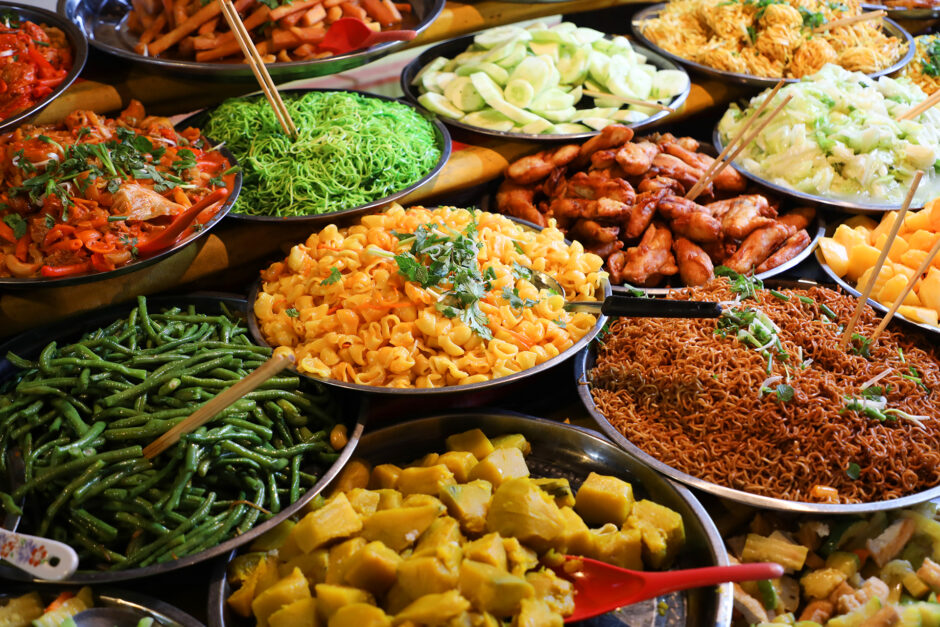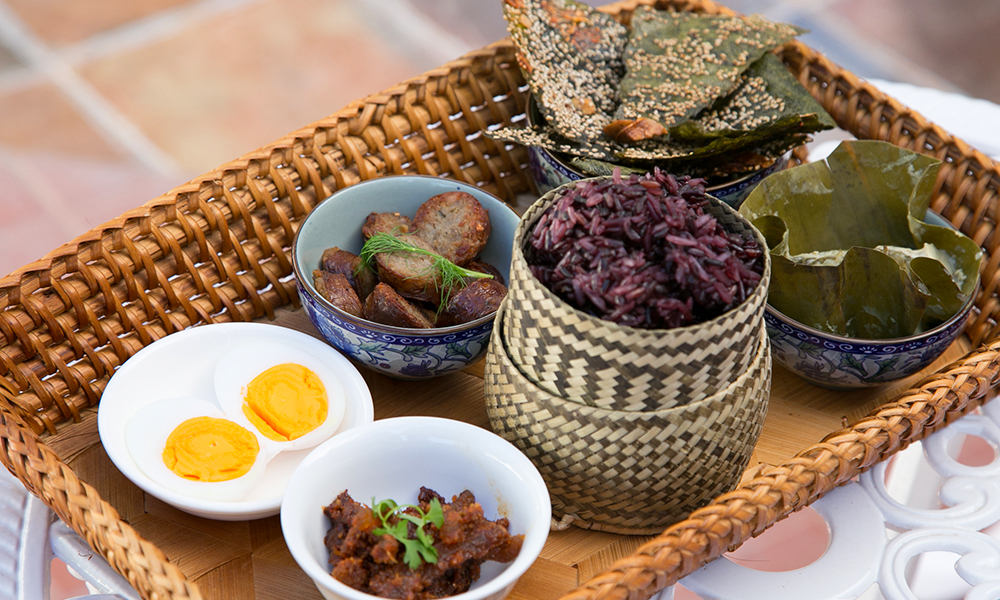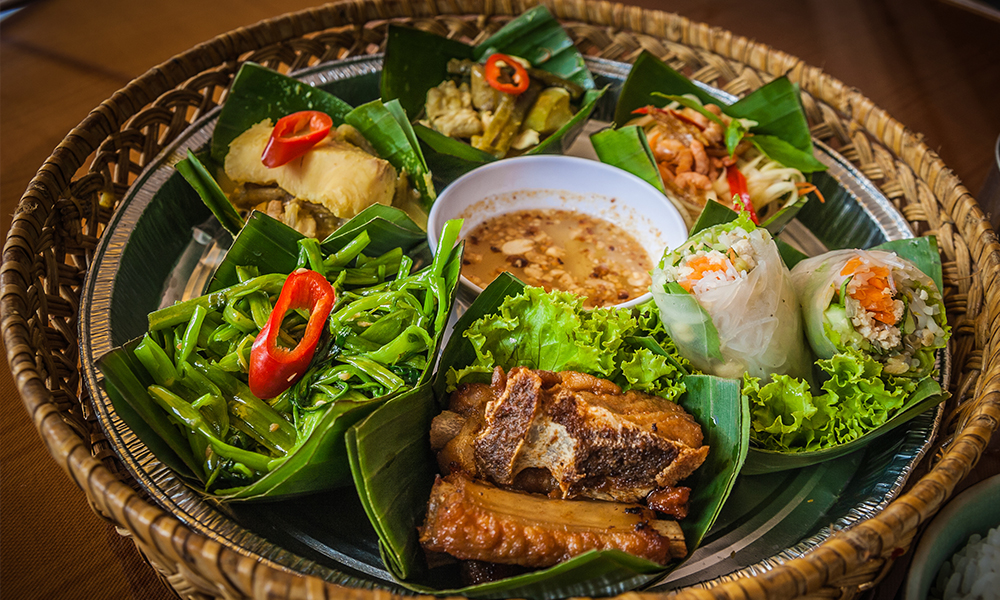Perk Up with 6 Tasteful Malaysian Drinks
Lighten your mood and rejuvenate your senses with 6 must-try Malaysian drinks!
Discover the authentic in Asian cuisine food

Formerly known as Indochina during colonial times, the northern nations of Southeast Asia are home to a kaleidoscope of peoples, cultures and cuisines. Each with their own diverse and unique local flavours, and are also influenced by each other. If you’re a regular foodie on Asian Inspirations, you’ve probably tasted Thai and Vietnamese food before, as well as their southern neighbours, Malaysian, Singaporean and Indonesian. Now, let’s venture into Myanmar, Laos and Cambodia, and savour their plethora of exciting flavours!

Food in Myanmar tend towards the layers and nuances of savoury tastes, accompanied with the sour and spicy. A popular local rhyme sums up their traditional flavour palate: “Of all fruits, mango is best, of all meat, pork is best, of all leaves, Laphet is best”.
Laphet is fermented tea leaves, a signature pickled food with an appetizing tarty flavour. Eaten as a dessert on its own, as well as the main ingredient of Laphet Thohk – a salad made by mixing the pickled leaves with shredded cabbage, tomatoes, deep-fried beans, nuts and peas; seasoned with fragrant garlic oil, diced chillies and garlic cloves. A snack, appetizer or a simple meal dish with rice, that blends natural tender and crunchy textures with bracing, complex tastes. Popular from household to street food stalls.
Like their neighbours, rice is the staple food in Myanmar as well. Among the signature dishes is Nga Htamin Chin or fish rice, from the Shan State. A yummy breakfast favourite of mashed potato with shredded pan-fried fish, blended with rice, and shaped into a ball. Seasoned with turmeric, ginger, garlic, fish sauce, tomato sauce and salt. Garnished with spring onions. A savoury, aromatic and comforting family dish.
Thin, flat rice noodles is another beloved Shan specialty, available in easy-to-cook packets. Enjoyed with spicy, tangy and savoury chicken tomato curry; or in a clear peppery broth with marinated pork or chicken; garnished with garlic oil and toasted sesame, and enjoyed with pickled veggies.
However, the most popular noodle-dish among locals is the Mohinga – with a herbal, fish and shallot-flavoured broth, topped with fish floss, fish cake, crunchy fritters, onions, long beans and a squeeze of lime juice. Umami with a mild sweet touch.
Another mainstay in Burmese cuisine is curry, but theirs are less spicy than others, often flavoured with dried spices, aromatics and fresh herbs. There are many exciting versions with pork, chicken, egg, beef, mutton, fish, and shrimp.
Burmese people love deep-fried street food and sweet snacks too. A massive selection of samosas, spring rolls, fritters, pastries and many more. Burmese sweetness doesn’t usually come from sugar, but the tasteful use of local fruits, glutinous rice, grated coconut, coconut milk and tapioca.

Lao cuisine is typified by the generous use of fresh herbs and veggies, with a flavour palate that emphasizes the savoury with herbal bitter undertones, punctuated by sharp spiciness; as well as the love for glutinous rice, known here as Khao Niew. In fact, it’s the staple carb food in Laos, rather than white and brown rice more common elsewhere; served warm in a basket to share, and traditionally eaten by hand with the table of dishes.
Seasoned foodies may find some Lao dishes similar to Northern Thai food, as the latter is heavily influenced by the former, and both peoples share many ethnic and cultural roots. One such delicacy is the Larb minced meat salad, with pork, chicken, beef, fish or duck. Flavoured with fish sauce, chilli, and sugar. Made fragrant with shallots, coriander, mint leaves, spring onion, and lime juice for a citrusy tinge.
Lao-style pork sausages are also popular in Northern Thailand. Infused with local herbs such as lemongrass, galangal, cilantro, kaffir lime leaves, chillies, and shallots. Absolutely delicious with a mesmerising blend of savoury and aromatic flavours.
Another Lao and Thai shared dish is the green papaya salad. Made with the same flavourful ingredients and methods, except the Lao recipe doesn’t include peanuts. There’s also the more popular, traditional Lao version called Thum Mak Hoong, with a spicier and funky yet incredibly appetizing taste.
Speaking of salads, the Nam Khao is a delightful Lao specialty. Cooked rice mixed with egg and fish sauce, shaped into balls and deep-fried. Topped with pork sausage bits, grated coconut, dried chilli, peanuts and herbs. Crispy and savoury with a refreshing aroma.
Besides rice, noodles are widely enjoyed in Laos as well. Khao Piak Sen is a beloved comfort food with flat, chewy rice noodles and minced meat, in a warm flavourful bone broth. Seasoned with galangal, shallots and garlic. Garnished with coriander leaves, bean sprouts, and a pinch of lime juice. Add sugar, soy sauce, dried chilli powder, fish sauce or soy sauce to your preferred combination of tastes.
Lao cuisine has Vietnamese-French influence too, exemplified by the Phor. Basically, the Lao version of Pho, with a similar umami beef bone soup and tender vermicelli noodles; topped with fresh herbs. There’s also Lao version of Vietnamese Banh Mi, known as Khao Jii Paté. A baguette with roast meat, watercress, and julienned carrots, flavoured with a special chilli-garlic sauce.
Of course, these are but a tiny sample of the amazing flavours Laos has to offer. Steamed goodies, roasts, stir-fries, stews, broths
, snacks and desserts – take a stroll through a street market in the capital city of Luang Prabang lets you enjoy a whole range of them all, and that’s besides the many hawker stalls and diners wherever you go.

Nestled between Central Thailand to the west, and Vietnam to the east, Cambodian history is deeply intertwined with all its neighbours. As such, there are Thai and Vietnamese dishes that have originated from Cambodia, and vice versa; with many shared ingredients and cooking methods. However, Cambodian food is generally less spicy than other Southeast Asian cuisines, with a balance of sweet, sour, bitter and savoury flavours.
Thanks to the bountiful rivers and great lakes, Cambodians enjoy a rich variety of freshwater fish and prawns, as well as seafood from the Gulf of Thailand in the country’s south. The signature Amok is a fish curry flavoured with fish sauce, shrimp paste, a local bitter herb called Slok Ngor, and a unique spice-paste named Kroeung that includes lemongrass, magrut lime zest and leaves, galangal, turmeric, garlic, shallots, chilli and finger-root. Made soft and velvety with coconut milk and eggs; steamed in banana leaf, resulting in a yummy soufflé texture, and a delicate sweet-salty and mildly spicy taste.
But the true Cambodian national dish is the Samlor Korko. A sumptuous pork ribs and catfish soup packed with green veggies. Traditionally flavoured with Kroeung, salt, palm sugar, fish sauce, and a special fermented fish paste called Prohok. Made fragrant with ground roasted rice, which also thickens the soup for a creamy texture. Cooked in a slow simmer, and enjoyed hot with rice. Sumptuous and wholesome with a complex savoury flavour.
There’s also rural-style grilled fish with sweet and tangy tamarind sauce, umami steamed fish with assorted herbs, mouth-watering deep-fried fish, and many more. Cambodian seafood dishes are also heavenly, especially stir-fried crab – traditionally marinated with a local green pepper called Kampot, or seasoned with Kroeung and garlic.
Beside fish and seafood, Cambodians enjoy chicken, beef and pork as well. Popular dishes include the warm and umami Kaw Ko beef stew, the sweet-sour Samlor Machu Ktiss pork curry with pineapple, delicious grilled pork marinated with palm sugar and fish sauce, savoury-sour minced chicken stir-fry, red curry chicken with sweet potatoes, etc.
As for carb foods, there’s the common white rice, rice-based dishes, noodles in a myriad of stir-fried, soup and salad dishes, as well as yummy baguettes and pastries similar to Vietnamese cuisine.
And like their neighbours, Cambodia has a massive and diverse street food culture with all kinds of flavourful goodies. Check out this vid for a taste!

Lighten your mood and rejuvenate your senses with 6 must-try Malaysian drinks!

Pair your hearty barbecues with these refreshing Asian delights!

What are the properties of ginger, and how to pick, store and use ginger in your cooking? Find out here!